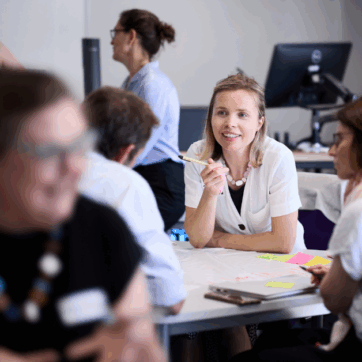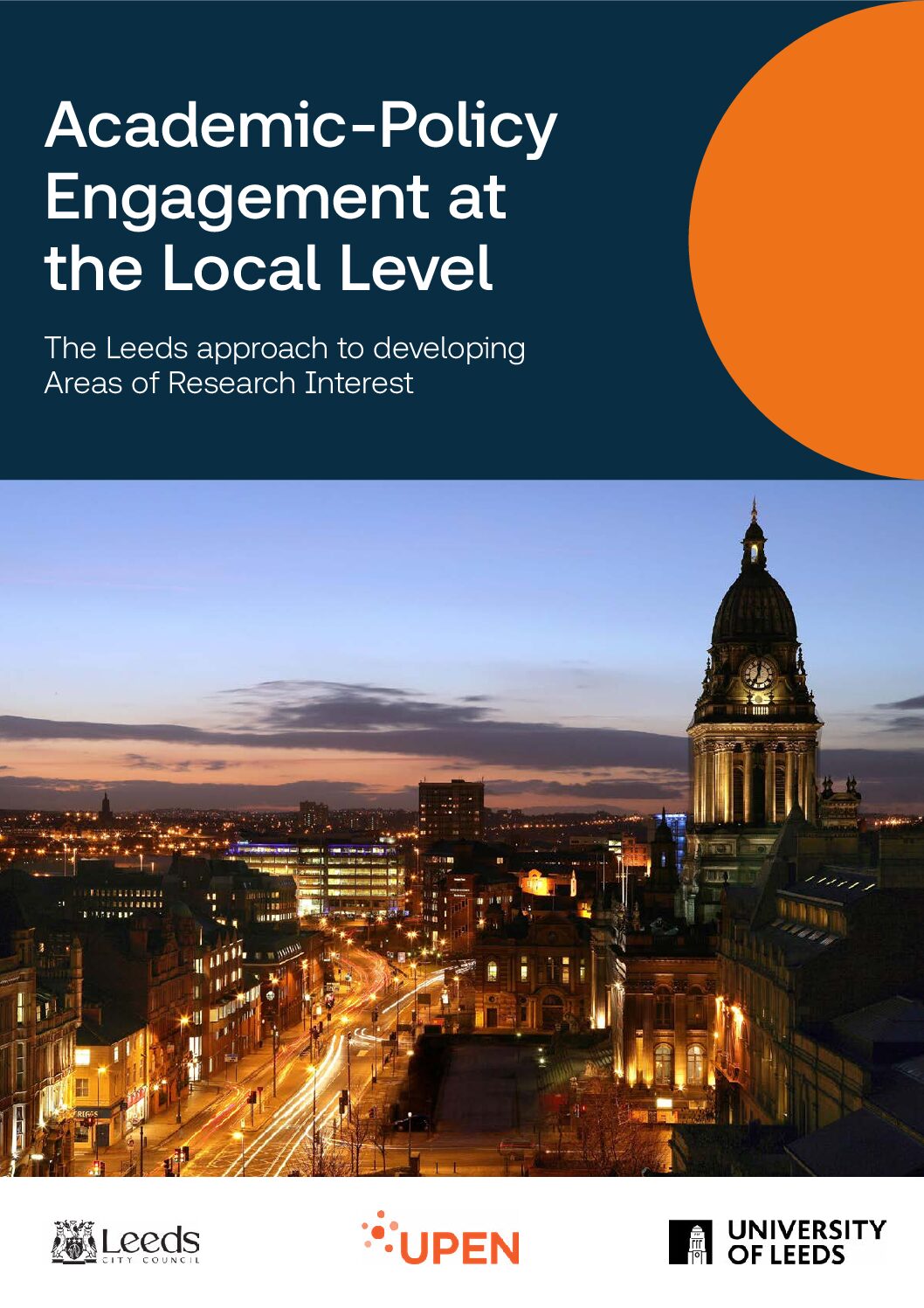‘Social infrastructure’ is a phrase often used by policy makers and academics to describe places where people come together. But what does this phrase mean to local communities and how can we include them in discussions about these spaces? In 2022 the Bennett Institute for Public Policy ran a CAPE funded project with the Institute for Community Studies to explore. Owen Garling, Knowledge Transfer Facilitator at the Institute, reflects on the experience of talking about social infrastructure with community groups, how the project effectively engaged the public, and why it’s so important they are included in conversations.
- Spaces for community: strengthening our social infrastructure
- Community perceptions of social infrastructure
We all develop our own ways of seeing the world and our own ways of describing it. For example, as George Bernard Shaw is famously quoted as saying, “England and America are two countries separated by the same language.”
In my role as a Knowledge Transfer Facilitator at the Bennett Institute for Public Policy it often feels as if my work sits in the gap between two different ways of describing the same thing.
On the one hand, the world of academia has particular ways of seeing the world, and on the other is the worldview of policymakers. In my work, some of the focus is on being able to translate between these two different but related views. At other times, the focus is on creating spaces where people can start to learn each other’s languages.
However, there is also another group that is often left out of these spaces and types of discussion. How can we engage with those members of the public who may also have an interest? This question is something that we have been able to explore thanks to funding from CAPE.
In Spring 2022, the Bennett Institute in partnership with the Institute for Community Studies and funded by Power to Change launched a project looking at community definitions of social infrastructure.
Social infrastructure is a phrase that has entered the vocabulary of policymakers and academics fairly recently. As a recent report by the Bennett Institute showed, there are a number of competing definitions for the phrase. For some, it is purely the physical space where people can come together in a community. Others take a broader definition and also include the services that are provided from them. In our Bennett Institute report we settled on a middle-ground and defined social infrastructure as:
“those physical spaces in which regular interactions are facilitated between and within the diverse sections of a community, and where meaningful relationships, new forms of trust and feelings of reciprocity are inculcated among local people.”
In many ways the debate about definitions, whilst important, is something that shows the difficulties that academics and policymakers can have in trying to find common ground in describing the world. There is a risk that conversations stall at the conceptual level, rather than focusing on what makes a difference to people’s lives.
With our project, we were primarily interested in the worldviews of another group of people – those people who make use of social infrastructure on a day-to-day basis; members of the public, communities, individuals. If you were to ask anyone walking down the street for a definition of social infrastructure, you would most likely be met with a blank face. But ask them where they would go to meet their friends, or to meet new people, and you would get a very different answer.
Our project with the Institute for Community Studies sought to explore this community understanding of social infrastructure. What would happen if we were to ask specific communities about how they understand the social infrastructure that exists in the places where they live, work and play? And how could we bring their views together with those of people working in academia and policymaking?
The Institute for Community Studies and its host organisation the Young Foundation manage a Peer Research Network across England, comprised of researchers drawn from the communities who are the subject of the research. So rather than someone coming in from ‘outside’ and asking questions, such as an academic or civil servant, it is someone that participants may know and trust, and who understands the quirks of that place, that are asking the questions.
Through this network, we were able to conduct peer research in Barking and Dagenham, Bristol, Liverpool and Newcastle. Over the spring and summer of 2022 nine peer researchers were able to carry out 53 hours of interviews with 79 people across these four locations. From this data, the peer researchers were able to identify a number of common themes from across the conversations as well as over 500 individual comments and quotes that were worthy of further exploration.
And whilst the research has been incredibly important in helping our project team to understand how people view social infrastructure in their communities, taking the data without sharing it locally, felt perhaps a bit one way and possibly ‘extractive’. We wanted to make sure that we could take the insights back to those places where they had come from and share them with people with an interest in their local communities.
Engaging local communities through roundtables
Throughout the course of autumn 2022 the Bennett Institute and the Institute for Community Studies held a series of ‘roundtable’ events at local community organisations in each of the four research locations. These events brought together a diverse range of participants, including the peer researchers themselves, along with local public sector representatives, civil servants and members of local civil society organisations.
The purpose of these sessions was to share the data gathered through the peer research process with people with an interest in the place in question, but also who may have a different view on what data should look like.
When the peer research teams analysed the data, they made use of Miro, an online whiteboard. Working remotely, they were able to group virtual post-it notes and discuss their content.
With the luxury of face-to-face meetings, we did not want people to be spending the whole time staring at their computer or phone screens and so we needed to find a more interactive way of people working together that would enable them to engage individually with the data as well as coming together to make sense of it.
We achieved this by printing all 500 or so quotes gathered by the peer research teams on to individual A6 cards. For each location we had over 100 cards in our ‘deck.’
We then used a technique drawn from the Liberating Structures approach called 1-2-4-All to create time for the group to understand and start working with the cards. For this, each person was given a deck of cards and asked to spend some time quietly reading them and identifying any themes that they saw emerging from the data. Next, people were put into pairs at random and given time to discuss each other’s emerging themes with a view to coming up with a new list of themes on which they both agreed. Pairs were then paired up, again at random, and the groups of four discussed themes and came to a consensus about the themes coming from their cards. This process of pairing carried on with ever bigger groups, until there was only one group left made up of all the attendees and ideally, a set of themes that the whole group agreed with.
The results of our work have recently been published and are available from the British Academy website both as a narrative report and a more detailed report setting out the results of the community research.
As well as the findings that fed into the research projects, there are a number of lessons that can be drawn from the process that we undertook that may well be of use to others looking to engage and connect with groups outside of the usual academic / policymaker nexus.
Lessons for community engagement
The roundtable events really showed the importance of creating an environment where people feel comfortable to share their views, listen, and engage with others.
Exercises like the 1-2-4-All approach that we used are good ways to break down possible barriers and get people talking to one another and both breaking the ice and enabling people to leave their job titles at the door.
Finding the right types of space also made people feel comfortable. Meeting in ‘real’ places and being welcomed into those spaces by the people who live and breathe them, rather than in sterile meeting rooms gave the workshops more of a character and sense of connection.
Perhaps above all, providing people with a lunch before the event where we could all sit down and take time to talk to one another meant that when the work started there was already a sense of connection between participants.
Another lesson was the difficulty of organising events from ‘outside’ the communities that you want to work with. Having support from people who know the places where you want to work is incredibly helpful. The CAPE fellowship was one of the networks of people that we were able to tap into to help us with who to invite to the roundtables.
Finally, focusing on how we bring diverse groups of people together to think and talk together was incredibly important for the roundtables. We will all have been to meetings and workshops where all the attendees already know one another. One of the delights about the roundtables was watching people making new connections, realizing that they had shared interests with people they had never met before, and swapping contact details so that they could carry on the conversations.
Conclusion
With this work we have started to help set out ways in which the language gap between policymakers, academics and the wider community can be bridged. Included within the policy suggestions in the final report was the recommendation that “National, regional and local policymakers should include and understand community voices when designing and maintaining social infrastructure.”
This recommendation reaches beyond conversations around social infrastructure and can help to inform the dialogue between these different stakeholders in other relevant areas of policy.
Think, for example, about the ways in which the announcement of the successful bids for the Levelling Up Fund was met with criticisms about both the processes for allocating funding and the decisions taken. How different would this have been had policymakers really listened and engaged with those communities who would be affected rather than relying on a distant, competitive top-down process?
I hope that the lessons that we have learnt in the course of this project are of use to others looking to bridge these different ways of seeing.
About CAPE
Capabilities in Academic Policy Engagement (CAPE) is a knowledge exchange and research project funded by Research England from 2020-2024, which has been exploring how to support effective and sustained engagement between academics and policy professionals. The project is a partnership between UCL and the Universities of Cambridge, Manchester, Northumbria and Nottingham in collaboration with the Government Office for Science, the Parliamentary Office for Science and Technology, Nesta and the Transforming Evidence Hub.
About CAPE case studies
CAPE case studies have been written by academics and policy partners on the CAPE project as reflections on their experience of undertaking academic policy engagement. The case studies include explorations of academic placements in policy organisations and vice versa (called Policy Fellowships), partnerships between universities and policy organisations, and collaborative projects between academics and policy partners.


